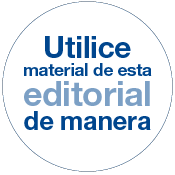5: POLITICS AND THE FIRST BIG CHANGE
Parallel to the investigation and screenings that we planned across the first half of 2017, we included some interactive experiences in Spanish Sign Language. The XMILE experience was so unique that we received a lot of media attention. I will explain those interactive experiences in the following chapter.
As a consequence, in June of 2017, politicians sat up, took notice of our project, and called me to give a talk at the Spanish Senate.

I felt very happy because of the invitation.
But then it hit me: I suddenly realized the magnitude of the occasion. It meant that I was responsible for speaking on behalf of so many people with disabilities, who are often left voiceless.
-THE SPANISH SENATE-
Anyway, after several weeks of meeting and talking to different associations, university teachers and accessibility companies, I was ready to put together a report and suggestions to share with the senators.
In the 45-minute presentation, I started by explaining XMILE and our work in accessibility and Universal Design. Then, I shared all the arguments I have already mentioned here about accessibility and why its development needs to be a part of the production right from the start.
In addition, I argued about the importance to create links between the film industry, the government, the associations for the impaired, the accessibility companies, the creators and the education system in order to develop an inclusive high quality cultural network. From the economic point of view, I explained to them that nowadays high technology does not necessarily mean high prices: Creating an AD, SDH and a Sign Language version for a feature film costs less than 2,000 euros.
When concluding my talk, I made the senators aware that these tools are not only an affordable right for people with disabilities, but also an aid to many more people with other needs: Elderly people who need subtitles on television, people who are learning a language and watch films in original version with subtitles, or people who need a clearer explanation on what is going on during a film.
My final thought was: If every citizen pays their taxes, why not include all of them as an audience when crafting audio-visual projects with the state’s money?

-DIRECT CONSEQUENCES-
Luckily, my words convinced the senators to agree that something had to be done regarding this issue. I felt relieved!
Two days after my comeback from Madrid, I got a call from the Institut Valencià de Cultura. It is the entity from the Valencian Community that manages the audio-visual production subsidies, among other tasks.
Since 2016, they were tracking our project and collaborating with us. For example, they arranged to have XMILE’s official press conference at their facilities.

After the Senate’s talk, they called to request a report and to ask, how accessibility could be incorporated into their application form for film subsidies. I sent my conclusions to them, and a year later, in 2018, they announced that every single audio-visual project funded with Valencian money was obligated to have an audio description and SDH.
Valencia was the first of Spain’s autonomous regions to make a move towards a real change. This section is still valid today.








